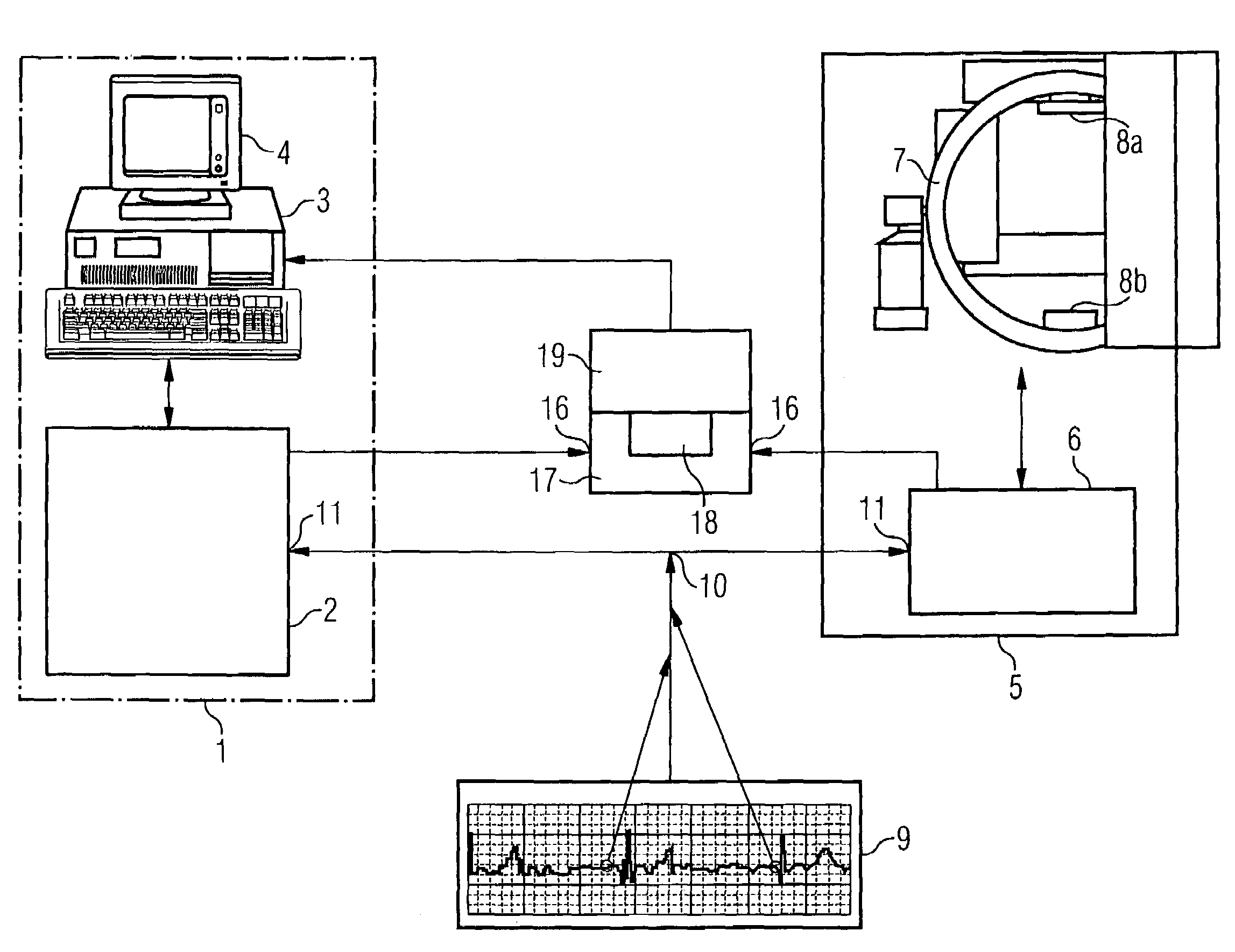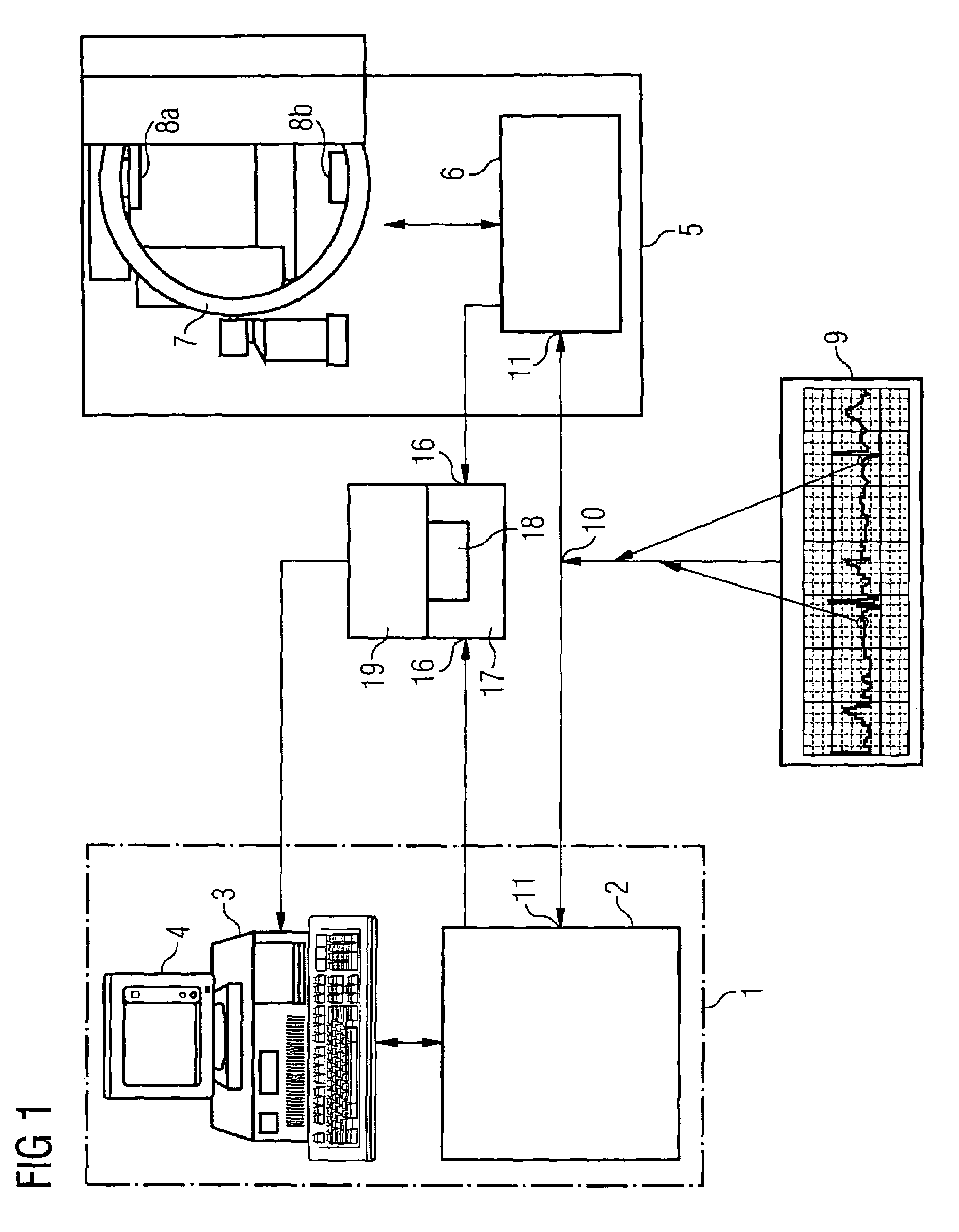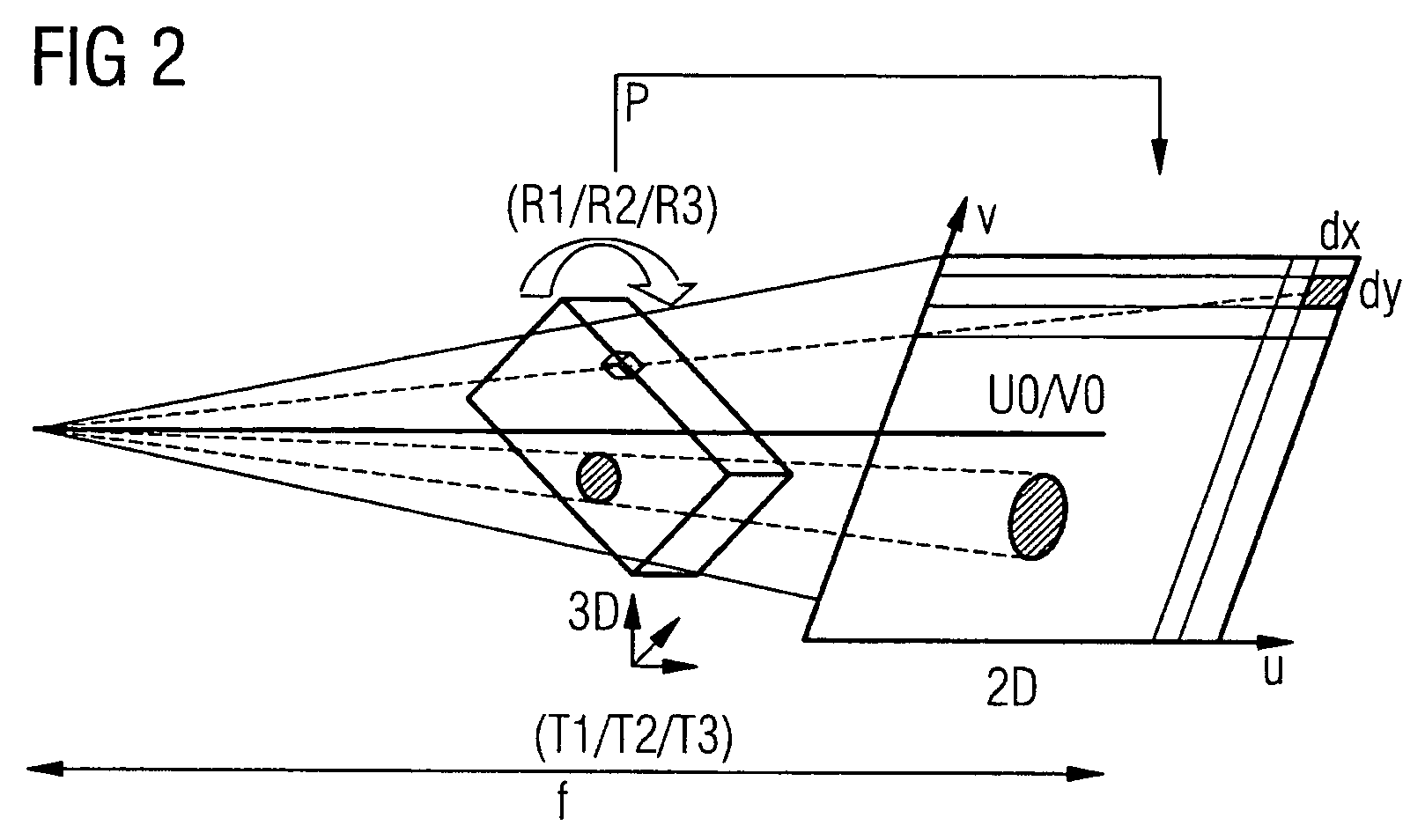Method and device for visually supporting an electrophysiological catheter application
a technology of electrophysiological catheter and visual support, which is applied in the direction of catheter, application, angiography, etc., can solve the problem that the user is not usually able to accurately capture the relationship between the displayed 3d mapping data, and achieve the effect of avoiding inaccuracy
- Summary
- Abstract
- Description
- Claims
- Application Information
AI Technical Summary
Benefits of technology
Problems solved by technology
Method used
Image
Examples
Embodiment Construction
[0023]FIG. 1 schematically illustrates a part of an EP mapping system 1 with a recording unit 2 for the 3D mapping data, which is connected to an analysis and image-processing unit 3 for displaying the captured data on a screen 4. Furthermore, by way of example, an x-ray system 5 in the form of a C-arm system is shown, said x-ray system having an image system 6 for providing the 2D fluoroscopy images. The C-arm system 5 comprises the C-arm 7, an x-ray source 8a, and x-ray detector 8b. In the known method, the C-arm 7 is designed such that it can be rotated about several axes. In this example an ECG is recorded from the patient, by means of an ECT recording system 9, during the catheter application. The ECG recording system 9 has a trigger output 10, which is connected to corresponding trigger inputs 11 on the image system 6 of the x-ray system 5 and to the recording unit 2 of the EP mapping system 1. This ECG triggering enables both the 3D mapping data and the 2D fluoroscopy images ...
PUM
 Login to View More
Login to View More Abstract
Description
Claims
Application Information
 Login to View More
Login to View More - R&D
- Intellectual Property
- Life Sciences
- Materials
- Tech Scout
- Unparalleled Data Quality
- Higher Quality Content
- 60% Fewer Hallucinations
Browse by: Latest US Patents, China's latest patents, Technical Efficacy Thesaurus, Application Domain, Technology Topic, Popular Technical Reports.
© 2025 PatSnap. All rights reserved.Legal|Privacy policy|Modern Slavery Act Transparency Statement|Sitemap|About US| Contact US: help@patsnap.com



